URGENT!
Due to the weather, we are experiencing intermittent power outage and loss of internet. Please expect delays and or rescheduling of appointments during this time. We will reach out to you as soon as we can. Stay warm and stay safe!
Are you tired of your dryer taking forever to do its job? Are you running multiple loads to get your clothes dry? Are your energy bills higher than you’d like them to be? It may be time to take a look at your dryer’s efficiency levels.
Most assume that to improve dryer efficiency, an entirely new appliance is in order. What they don’t realize that there are actually some simple things they can do to increase their dryer’s efficiency – and decrease their own energy costs – without investing in an entirely new system.
Here are ten easy tips to help you get the most out of your dryer, and save money in the process
A clogged lint filter can reduce the dryer’s efficiency by blocking airflow. This will cause the dryer to work harder to get the job done and take longer to dry the clothes. The longer your dryer runs and the harder it has to work to do its job, the more you spend on energy costs. It’ll also put more wear on the appliance, warranting a replacement sooner than you’d expect.
In addition to exhausting your dryer’s stamina, a dirty lint filter can also be a fire hazard. Cleaning the lint filter is a quick and easy task that can make a big difference in your dryer’s performance.
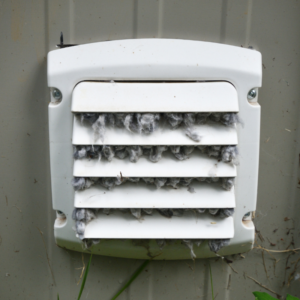 The dryer vent is the pipe that carries hot air and lint from the dryer to the outside of your home. If the vent is blocked, the hot air and lint can’t escape, causing the dryer to work harder and the clothes taking longer to dry.
The dryer vent is the pipe that carries hot air and lint from the dryer to the outside of your home. If the vent is blocked, the hot air and lint can’t escape, causing the dryer to work harder and the clothes taking longer to dry.
In addition, like a full lint trap, a blocked vent can be a fire hazard, and it makes you more vulnerable to carbon monoxide leaks too. Make sure to check the vent regularly and remove any lint or debris that may have accumulated.
It is also worth checking where the vent exits your home to make sure that it is clear, free of debris, and unblocked by clutter. This is a simple step you can do anytime you’re outside.
In addition to checking the vent for blockages, it’s also important to have it regularly cleaned Lint and other debris can build up in the vent, reducing the airflow and making the dryer work harder. This also increases your risk of gas leaks and fire hazards significantly. In fact, dirty dryer vents a leading cause of dryer-related fires.
Be sure to trust a professional for your yearly dryer vent cleanings to avoid vent damage and ensure no areas are missed. Our experts will get the job done right.
Your dryer has different settings for different types of fabrics – take advantage of these. For example, use the “delicate” setting for delicate fabrics and the “heavy duty” setting for heavy fabrics. Using the correct setting can prevent damage to your clothes and save energy.
These settings are built into your dryer to help keep your dryer working for a long time by saving the energy spent in drying.
Drying similar items together, such as all jeans or all towels, will help the dryer work more efficiently. This is because the dryer can dry similar items at the same time, rather than having to switch between different types of fabrics. The articles of fabric that are being dried will tend to finish drying at the same time if they are similar in weight, texture, and fabric type. This means that your dryer won’t have to continue working to dry a couple heavier articles of clothing or other fabric while the lighter ones are already dry.
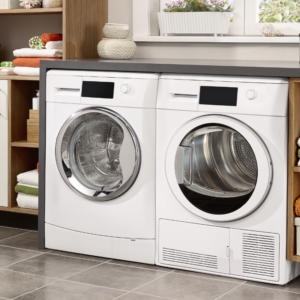 Over-drying can cause shrinkage and damage to your clothes, and it’s a waste of energy. To prevent over-drying, pay close attention to the moisture sensor on your dryer or simply set the timer on your dryer for a shorter amount of time.
Over-drying can cause shrinkage and damage to your clothes, and it’s a waste of energy. To prevent over-drying, pay close attention to the moisture sensor on your dryer or simply set the timer on your dryer for a shorter amount of time.
It takes time and energy to heat up a dryer. By drying multiple loads of laundry back to back you save on the time it takes for the dryer to warm up, which then ensures your clothes dry faster. When you cut back on drying time, you save money.
Using dryer balls keeps your laundry from clumping together while drying. This means that warm air can easily circulate around your clothing helping it to dry faster and more evenly. Say hello to shorter dryer times and lower energy bills.
Once a month, take out your lint trap, wash it with soap and water, then let it fully dry. While dryer sheets and dryer balls can be a great asset, they also contain chemicals that can clog the pores of the lint trap over time. Even if things look to be clear, trust us – they aren’t.
This is an easy step for maximizing efficiency – just make sure the lint trap is fully dry before putting it back into your dryer.
A professional can check for any issues that may be reducing your dryer’s efficiency and fix them. This can include checking the vent, the drum, and the motor. Regular maintenance can help to extend the life of your dryer and save you money on energy costs in the long run.
By following these tips, you can help your dryer work more efficiently and save money on energy costs. And if you ever have any issues with your dryer, don’t hesitate to call our experts at Lords Chimney in Houston – we’re always happy to help.
Happy drying!
Books and movies have often depicted the trance-like state that people can find themselves in while staring at a flickering fire. Perhaps you have even experienced this sensation yourself. The longer you stare, the more it seems like you can’t stop staring – your mind quiets, your breathing slows, and your muscles relax.
Turns out, this experience is more common than you’d think. And, in fact, science is showing us that it can have many positive benefits for both your physical and mental health.
 Dr. Christopher D. Lynn, a medical and psychological anthropologist at the University of Alabama, did a three-year long study that showed the effects of fire on human physical and mental health. His study observed hundreds of people as they watched and listened to a burning fire.
Dr. Christopher D. Lynn, a medical and psychological anthropologist at the University of Alabama, did a three-year long study that showed the effects of fire on human physical and mental health. His study observed hundreds of people as they watched and listened to a burning fire.
Participants in the study went through a series of biological measurements that included blood pressure, as well as psychological data. The participants then watched a video of a fire, first without sound, then with the crackling sound of the fire added to the video. And the results yield some interesting info…
Healthy blood pressure can indicate low anxiety, and lower risk of heart attack and stroke. People who suffer from chronic high blood pressure, or hypertension, run the risk of their heart overworking as it tries to maintain appropriate levels of oxygen and other necessities in the body.
Feelings of anxiety and depression have also been linked with high blood pressure. When blood pressure is lowered it is possible, if not likely, that anxiety and stress will decrease as well.
There’s no denying a correlation – and it’s one reason to take the plunge and invest in that new fireplace today.
That study revealed some telling things, but what other benefits can a fireplace provide for mental health?
🧠 Reduced Anxiety.
When watching a fire our natural reaction is feelings of calm and peace. The mind is able to relax and slow down which allows thoughts to order themselves – and allows you to focus. Regular exposure to safely burning in-home fires in a fireplace is a proven way to relax and slow down – causing long lasting mental health benefits.
🧠 Desire to Socialize.
Another benefit that the study noted was a higher desire among participants to socialize and engage with other people. One of the symptoms of poor mental health is isolation, even as feelings of loneliness are present. Experiencing community with others has been linked to positive moods and strong mental health.
🧠 Positive Reflections.
Different smells can have different effects on people. The right scent has the power to mentally transport a person to specific times and places that they have connected to various feelings. The soothing aroma of burning wood is almost always linked with feelings of comfort, warmth, and relaxation.
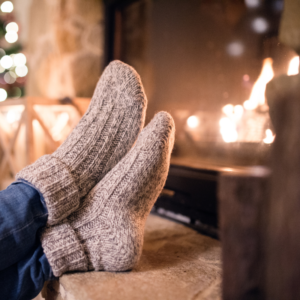 As it often does, science has shown us what was already assumed to be true – that the presence of a safely burning fire provides benefits of relaxation and a better mood. It is no wonder streaming services, like Netflix, provide customers with the option to stream fireplace fires on the television.
As it often does, science has shown us what was already assumed to be true – that the presence of a safely burning fire provides benefits of relaxation and a better mood. It is no wonder streaming services, like Netflix, provide customers with the option to stream fireplace fires on the television.
But, what is it exactly about fire that triggers this ease of anxiety and increase in positive feelings?
Well, it seems there are some historical links. Humans have a long relationship with fire. Theories suggest that these positive reactions we have to the sound, light, and warmth of a fire are innate, instilled in us from our species first mastery over fire.
As the human species developed, fire allowed various advantages, such as seeing in the dark, warding off danger, and keeping warm in cold climates. Fire provided comfort, allowing our bodies and senses to relax. In addition to that, food consumption became safer as we were able to cook it.
Basically, fire allowed communities to eat together, serve each other, and fellowship with one another – all while gaining the peace of mind that comes with light, warmth, and safety. All of those things still show themselves to be true as we spend time around the fire today.
Lords Chimney specializes in designing and installing fireplaces that fit perfectly into the aesthetic of your home. Whatever your vision is for your fireplace, our team can help you decide on what type of fireplace would fit your needs – and we can install it too. Already own a fireplace? We are fully equipped to help you maintain it.
Call Lords Chimney or reach out to us online today to begin your fireplace ownership journey today.
Peaceful ambiance? Cozy comfort? Festiveness? Warmth?
A fire flickering in the fireplace checks all these boxes.
A home fireplace is an inviting asset, but it should always be used with proper caution so it’s a source of enjoyment, rather than worry. Thankfully, armed with a little knowledge and awareness, this is no problem.
Not all fires are equal. Incomplete combustion or inadequate air supply can generate a smoky fire, causing creosote and soot to build up in your chimney. Here are ways to avoid this:
You want your fire to be controlled and contained. This means taking measures to keep all embers in the fireplace and avoiding putting any combustible items where they could get too hot or be exposed to sparks.
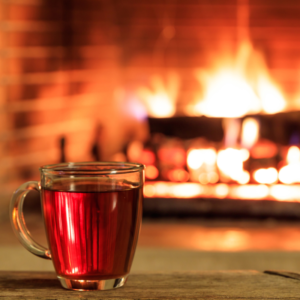 Use small pieces of wood. This will help ensure your wood is well-seasoned and burning cleanly, but also minimize chances of embers escaping as wood breaks down during a fire. Along these same lines, don’t overfill your fireplace.
Use small pieces of wood. This will help ensure your wood is well-seasoned and burning cleanly, but also minimize chances of embers escaping as wood breaks down during a fire. Along these same lines, don’t overfill your fireplace.Brick and mortar are durable, and chimney systems are built for longevity. With proper care and maintenance, they should serve you for a long time.
There are some basic safety tips everyone should know before lighting a fire in their home.
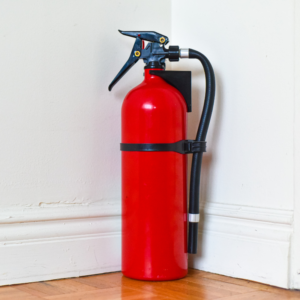 Invest in smoke alarms and carbon monoxide detectors. Check them monthly and replace batteries annually or if they fail a monthly check. Also, be sure your family knows how to exit the home and where to meet if they do ever go off.
Invest in smoke alarms and carbon monoxide detectors. Check them monthly and replace batteries annually or if they fail a monthly check. Also, be sure your family knows how to exit the home and where to meet if they do ever go off.We’re proud to be your partners in bringing the warmth and ambiance of a fireplace into your home and maintaining it for years of enjoyment. If you have questions about fireplace care, safety, or upgrades, give us a call today!
Reach out to our Houston location at 281-786-0507, our Beaumont location at 409-240-0013, or you can contact us online. We’d love to hear from you soon.
Halloween is coming and with it stories of monsters, ghosts, goblins, and witches. What’s the best way to keep this creatures away? Well, we’re not so sure about most things, but when it comes to witches, we might have some good news for those with a bend in their chimney. This slanted design is called a witches crook and, legend has it, if you have one, the witches will stay away.
Many fireplaces are located in a place that doesn’t line up to where the chimney is built on the roof. The reason for this is typically because a chimney tends to look best on the highest point of the roof – and that doesn’t always mean it is directly above the fireplace. To keep everything looking great, a witches crook was built to help the smoke in the fireplace reach the end of your chimney.
What’s in a name?
 So, where does the witch come into play? For as long as there have been fireplaces built into homes, there have been stories and legends associated with them. When the fire is lit, the smoke has to be able to get outside and, of course, if smoke can get out, then it’s up to the imagination to decide what can get in. Cultures around the world have all come up with different ideas and stories of what these things might be.
So, where does the witch come into play? For as long as there have been fireplaces built into homes, there have been stories and legends associated with them. When the fire is lit, the smoke has to be able to get outside and, of course, if smoke can get out, then it’s up to the imagination to decide what can get in. Cultures around the world have all come up with different ideas and stories of what these things might be.
In the Hebrides Islands off of Scotland, they were evil fairy demons that could be appeased with treats left for them by the fire. In Greece, India, and many other places, babies were delivered through the chimney by storks. In much of the world, Santa comes through the chimney bearing gifts for good little boys and girls.
And, like the stories above, the name witches crook comes from similar origins.Stories were told about witches that would make their way into homes through the chimney. Many people in history believed that the bend in the masonry of the chimney was put there to keep witches from being able to fly down directly into the chimney and terrorize the home.
Now, not every chimney has a witches crook but just because you don’t see one straight away doesn’t mean that there isn’t one built into an area that isn’t immediately visible. Often, the part of the chimney located in the attic will contain the witches crook. This is simply to keep everything looking tidy.
If you have a witches crook in your chimney, fear not! A witches crook almost never is the cause of problems for a chimney.
A witches crook almost never is the cause of problems for a chimney.
However there are things you should always be looking for when examining your chimney. Here are five things to watch for:
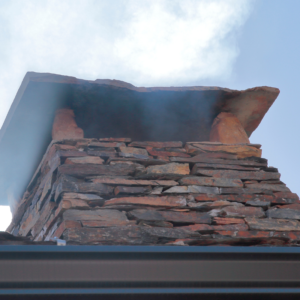 Creosote: Creosote is a thick, sticky, oily liquid that is the primary substance in preserving wood. It can be toxic, and because it is made up of many different elements, like salt and water, it can build up in your chimney It is highly combustible. so buildup is likely to catch fire, which can be a big danger to your home. This is why scheduling regular sweepings is so imperative.
Creosote: Creosote is a thick, sticky, oily liquid that is the primary substance in preserving wood. It can be toxic, and because it is made up of many different elements, like salt and water, it can build up in your chimney It is highly combustible. so buildup is likely to catch fire, which can be a big danger to your home. This is why scheduling regular sweepings is so imperative.As the heat gives way to winter’s cooler weather, we are reminded that the witches are coming – and that it might be time to get some professional eyes on our chimney. Lords Chimney is made up of a team of highly trained individuals that can help you identify creosote, clogs, invasive animals, cracks, and leaks, as well as other invisible problems that might lead to potentially devastating effects down the road.
Lords Chimney is certified by the Chimney Safety Institute of America (CSIA) and part of the National Chimney Sweep Guild (NCSG) which means that they are among the most knowledgeable and professional chimney technicians in America.
Call or book your next service online today.
If you’ve ever noticed any gummy-looking black stuff in your chimney, chances are it’s creosote. This dark residue is a byproduct of burning wood and it sticks to the inner walls of chimneys. It can be either flaky, shiny, or sticky.
And since creosote forms through burning wood, it is naturally prone to catching on fire. As such, the Chimney Safety Institute of America (CSIA) highlights its high combustibility as a primary safety concern.
Yes! Creosote is a combustible byproduct that can easily catch fire. And once it ignites, it can quickly spread through the chimney, causing the liner to break down and the masonry to crumble and crack. This means any future fires you light will be more prone to escape the chimney walls and enter your home.
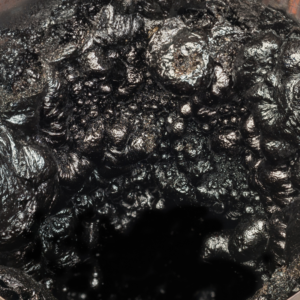 Creosote can also accumulate until it clogs the flue. This blocks the free flow of gases and smoke causing problems with drafting and airflow to develop. This hinders efficiency levels, and it puts you more at risk of being exposed to hazardous fumes, like smoke from your fires or even carbon monoxide – a deadly and extremely hard-to-detect gas.
Creosote can also accumulate until it clogs the flue. This blocks the free flow of gases and smoke causing problems with drafting and airflow to develop. This hinders efficiency levels, and it puts you more at risk of being exposed to hazardous fumes, like smoke from your fires or even carbon monoxide – a deadly and extremely hard-to-detect gas.
Considering the health and safety hazards that creosote poses, regular chimney sweepings become a critical obligation. Professional chimney sweeps have the right equipment to assess any chimney’s condition and address creosote buildup before it becomes a problem.
While creosote isn’t unavoidable, there are ways to effectively reduce accumulation in your flue:
Most chimney fires move slowly and don’t produce a lot of noise, which means you may have had one without noticing. The CSIA identifies the following signs that your chimney could have survived fire before:
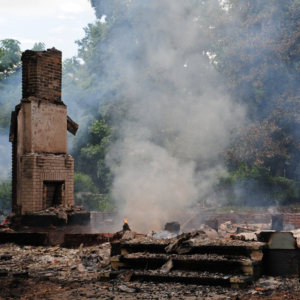 Black or dark-brown byproducts in chimney walls or fireplace
Black or dark-brown byproducts in chimney walls or fireplaceIf you do notice that a chimney fire is currently occurring, exit the home immediately and get in touch with your local fire department as soon as possible. In addition, as you are leaving your home, the CSIA suggests closing the door behind you if you can. The goal is to prevent any more air from feeding the flames until the fire department arrives.
Even if you believe that your chimney is functioning correctly, there could be hazards hiding away, ready to cause issues. Scheduling a chimney inspection is one way to gain peace of mind, during which we can determine if you need a sweeping.
Creosote is a dangerous byproduct that you might fail to notice immediately. This material is combustible and can cause health and fire hazards in your home. To effectively avoid this issue, we suggest getting in touch with one of our CSIA certified chimney sweeping experts to inspect and clean your chimney. Schedule an inspection today!